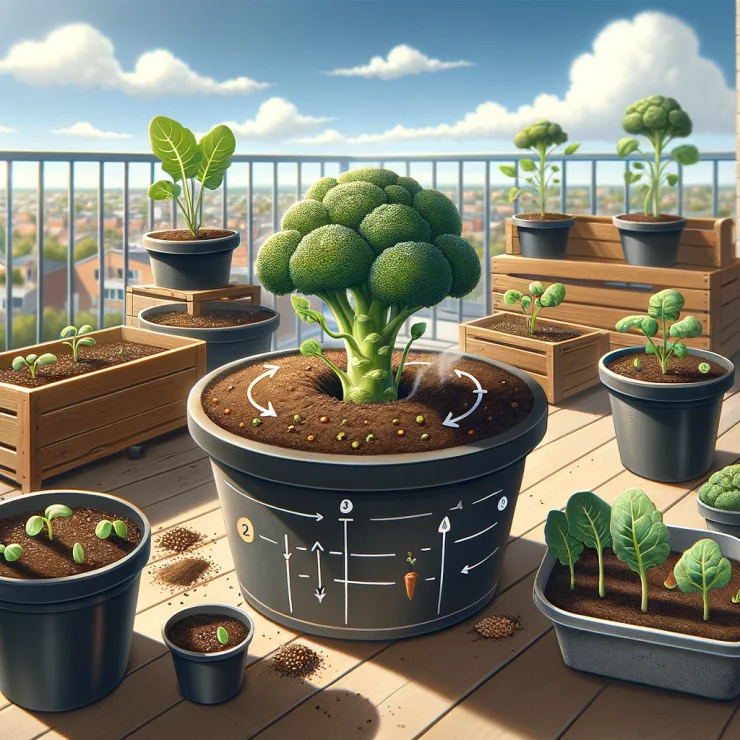Broccoli is a nutritious and versatile vegetable packed with essential vitamins and minerals. While it’s commonly found in supermarkets, growing your own broccoli at home can be a rewarding experience. Even if you have limited space, you can still cultivate this healthy vegetable by using containers. In this step-by-step guide, we’ll walk you through the process of growing broccoli in a container, from selecting the right variety to harvesting your homegrown bounty.
Step 1: Choose the Right Container
The first step in growing broccoli in a container is selecting the right vessel. Opt for a container that is at least 12 inches deep and 12 inches in diameter. Make sure it has drainage holes at the bottom to prevent waterlogging, which can lead to root rot.
Step 2: Select the Right Variety
There are several varieties of broccoli available, but some are better suited for container gardening than others. Look for compact or dwarf varieties such as ‘De Cicco’ or ‘Blue Wind,’ which are specifically bred for smaller spaces.
Step 3: Prepare the Soil
Fill your container with a high-quality potting mix that is rich in organic matter and has good drainage. Broccoli prefers slightly acidic soil with a pH between 6.0 and 7.0. You can also add compost or aged manure to enrich the soil further.
Step 4: Planting Broccoli Seeds or Seedlings
If you’re starting from seeds, plant them about ½ inch deep in the soil and space them 3 inches apart. Keep the soil consistently moist until the seeds germinate, which usually takes about 5 to 7 days. If you’re using seedlings, transplant them into the container, spacing them 12 to 18 inches apart.
Step 5: Provide Adequate Sunlight and Water
Place your container in a location that receives full sun, ideally 6 to 8 hours of sunlight per day. Broccoli requires consistent moisture to thrive, so water the plants regularly, keeping the soil evenly moist but not waterlogged.
Step 6: Fertilize Regularly
To ensure healthy growth and development, fertilize your broccoli plants every 3 to 4 weeks with a balanced fertilizer. You can also side-dress the plants with compost or aged manure throughout the growing season to provide additional nutrients.
Step 7: Monitor for Pests and Diseases
Keep an eye out for common pests such as aphids, cabbage worms, and slugs, which can damage broccoli plants. Inspect the plants regularly and treat any infestations promptly using organic pest control methods. Additionally, watch for signs of diseases such as clubroot or powdery mildew, and take appropriate measures to prevent their spread.
Step 8: Harvesting Your Broccoli
Most broccoli varieties take around 60 to 90 days to mature. Harvest the heads when they are firm, compact, and dark green in color. Cut the main head at an angle about 5 to 6 inches below the head using a sharp knife, leaving the plant intact to produce side shoots for continued harvesting.
Growing broccoli at home in a container is a rewarding and straightforward process that allows you to enjoy fresh, nutritious produce right from your own garden. By following this step-by-step guide, you can successfully cultivate broccoli even in limited space, providing you with a bountiful harvest for months to come. So why not give it a try and embark on your own broccoli-growing adventure today?






Add comment